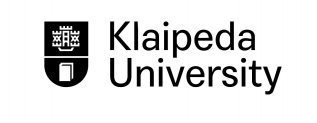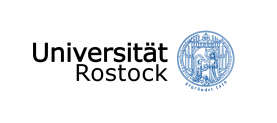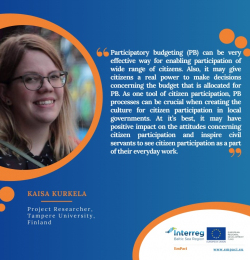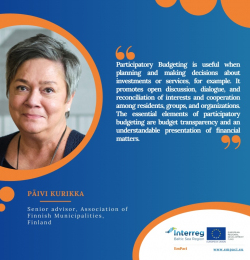Project duration:
01 Jan 2019 - 31 December 2021
Lead partner:
University of Rostock, Chair for Accounting, Management Control and Auditing: Prof. Dr. Peter C. Lorson
Countries involved:
Finland, Germany, Latvia, Lithuania, Poland, Russia
About EmPaci
Participatory budgeting is a process of democratic decision-making in which ordinary people take part in preparing and adopting a municipal or public budget. In the Baltic Sea region, only a few municipalities have applied participatory budgeting to date.
A typical type of citizen in such a process is male, politically active, well-educated, and 35-65 years old. The objective of EmPaci is to get more municipalities involved and mobilize different types of citizens by building municipal capacities, transnational clusters and municipality citizens cooperation.
Enable Participatory Budgeting through Information Technology

Photo (c) Free-Photos Pixabay
Setting up a new Participatory Budgeting (PB) process is challenging – and many decisions need to be made. No PB is like another, and each process is highly adapted to local laws, political goals, or the demography of citizens. However, this does not mean that it is not possible to learn from other initiatives.
Almost all of today’s processes, be it in the business or public sector, depend on information technology (IT) for their execution. PB is no exemption. IT can help create a more participative and interactive experience for citizens, and strengthen their engagement. The “Empowering PB in the Baltic Sea Region” (EmPaci) project, supported by Rostock University, has conducted research on IT solutions best suited for the support of PB. The PB feature matrix tool and corresponding documents have been released and presented to the PB stakeholders on the EmPaci project webpage.
The feature matrix is an online tool that analyses 50 different cities for 47 process and usability criteria in total. The idea is to compare and learn from other PB initiatives all around the world. It is meant for cities that currently plan to implement or improve PB to be able to answer the following questions:
- What kinds of cities implement similar features? For example, which cities also implement an upload functionality for files?
- What can we learn from each particular example?
- Which capabilities are implemented by a majority of initiatives and can be considered “state of the art”?
- Where can we find the homepage of these cities and their PB initiatives online?
Three complementary documents have been released to describe the underlying data.
Document 1 contains a manual of the feature matrix and describes the filter and download capabilities in detail. It helps to understand how to access the information and how it is structured.
Document 2 presents usability analysis based on the feature matrix as the database. It derives state of the art usability features of participatory budgeting websites with an additional focus on e-inclusion criteria, to assess the accessibility of webpages for visually or physically impaired citizens.
Document 3 provides a feature catalogue of process-related IT capabilities for PB initiatives. It allows cities that are interested in PB to inform themselves of the possible PB process items and their importance, as well as enables them to build an individual process that fits their needs.
Training videos on the PB Base network YouTube channel.
Follow the EmPaci project website www.empaci.eu to find out more about the project, which aims to get more municipalities and citizens involved in PB via building municipal capacities, transnational clusters and municipality/citizen cooperation all over the Baltic Sea Region. PB is a process of democratic decision-making that we believe in, where citizens take part in preparing and adopting a municipal or public budget. In the BSR, only a few municipalities have applied a PB process on a regular basis. If you are interested in getting support to develop your PB initiative, please contact your national or the nearest EmPaci partner. More information about the project can be found at www.empaci.eu.
Together we can gain more power in decision-making within local, regional or national public institutions!
Preparing for Participatory Budgeting: Online Manual for PB Beginners, Users and Experts
 The “Empowering Participatory Budgeting in the Baltic Sea Region” (EmPaci) project is delighted to announce the launch of the Online Manual – a compilation of the knowledge, practices and sources dedicated to Participatory Budgeting (PB). It is designed for municipality councils and agencies responsible for citizen engagement and PB implementation, communication specialists, NGOs and citizen groups specifically interested in meaningful PB design on national, regional or local levels as well as a database for researchers.
The “Empowering Participatory Budgeting in the Baltic Sea Region” (EmPaci) project is delighted to announce the launch of the Online Manual – a compilation of the knowledge, practices and sources dedicated to Participatory Budgeting (PB). It is designed for municipality councils and agencies responsible for citizen engagement and PB implementation, communication specialists, NGOs and citizen groups specifically interested in meaningful PB design on national, regional or local levels as well as a database for researchers.
Our Online Manual is a result of almost three years of work carried out by the project partners from Finland, Germany, Latvia, Lithuania, Poland and Russia. It promotes the concept of PB, shares best practices and provides applicable tools and methodologies for PB implementation and improvement. The Online Manual is structured by the following themes:
01 Participatory budgeting explained – introduction to PB Type groups, PB design principles, PB blueprint, PB success factors and PB evaluation.
02 Citizen needs assessment - principles of designing questionnaires for analysing citizen needs before designing the PB process, the EmPaci citizen survey tool, citizen needs analysis in the Baltic Sea Region countries (beyond the scope of the project partners).
03 PB Communication and Dissemination (C&D) – principles and steps of designing a C&D Strategy, stakeholder analysis, types of communication, strategic partnerships for C&D purposes, etc.
04 Technical Tools for PB design – compilation of features, tools and reference architecture for the PB tool design, as well as best practices and materials for own explorations.
05 PB Pilots – PB status quo in the Baltic Sea Region countries and the EmPaci project PB piloting processes carried out within the EmPaci project PB pilots (Finland, Germany, Latvia, Lithuania, Poland, Russia).
06 Training Manual – guidelines on how to gather resources and organise training on PB implementation, the EmPaci training experience and explanations on the Train-the-Trainer approach.
Each section of the Online Manual demonstrates the research and practical interventions performed within the EmPaci project. As a visually attractive and user-friendly tool, it contains textual, visual and audiovisual learning materials to be used in distinct stages of learning on PB. Also, the section Orgware contains materials and videos not only in English, but also in national languages of the project partners. Additionally it offers a glance into reports, tools and guidelines developed in other PB-focused initiatives.
Check it out to discover how the Online Manual can help to meet your needs!
After formal completion of the EmPaci project in December 2021, it will sustain through the international network PBbase aimed at sharing information and experiences regarding the implementation of PB in different local settings. The PBbase network can be followed through the LinkedIn PBbase account or the PBbase YouTube channel with a collection of training material on PB and recordings of EmPaci presentations in different languages.
Follow our webpage www.empaci.eu to find out more about the project. If you are interested in getting the support to develop your PB, please contact your national or the nearest EmPaci partner or seek contact through the PBbase network.
Participatory budgeting attracts interest - The PBbase celebrates its first year of operation
Picture: Seesam Tsokkinen/LAB UAS, EmPaci
As more and more municipalities, NGOs and other organizations in democracy are getting to know participatory budgeting all over the world, some basic questions arise over the subject. What is participatory budgeting (PB)? How is it implemented? Who is it for? What are the best practices and challenges for its implementation and sustainability? An excellent place to start tackling these fundamental questions is the international PBbase-network – a place for networking and checking out manifold materials in English and other languages.
The PBbase-network is set up by the EmPaci – Empowering Participatory Budgeting in the Baltic Sea Region-project. The PBbase-network is open to all interested parties, and its aim is to share information and experiences regarding the implementation of PB in different local settings. PBbase works mainly as a networking tool in bringing PB experts, municipalities and other interested parties together. Now, as the year 2021 comes to an end, the international PB-network celebrates its first year of operations.
The first year of PBbase has been a great start to the new network. PBbase has already hosted six international events on a wide range of PB-related topics, organised by experts from multiple European countries. These events have gathered together academics, municipal workers, citizens, NGO’s and other attendees interested in the multiple ways one can implement PB in different scenarios. The events have discussed themes such as implementing PB in a school setting, operating PB on a smaller scale in smaller municipalities and the evolving nature of PB. While the events have already generated noticable interest, there is always room for more attendees - everyone is welcome to join.
The one-year-old PBbase has also now solified its existence by appointing a board of experts. The board is set up to organize upcoming PBbase-events, facilitate the operations of PBbase and act as messengers on behalf of PB and PBbase. The members of the newly formed PBbase board of experts are from different countries in the Baltic Sea region. The first board of experts for the year 2022 were appointed on December 15th, 2021.
The board members in alphabetical order are:
- Jaroslav Dvorak, Klaipėda University, Lithuania
- Ellen Haustein, University of Rostock, Germany
- Annukka Heinonen, LAB University of Applied Scieces, Finland
- Magda Leszczyna-Rzucidło, Baltic Institute for Regional and European Concern BISER, Poland
- Peter Lorson, University of Rostock, Germany
- Renāte Lukjanska, Social Innovation Centre, Latvia
- Lienīte Priedāja-Klepere, Vidzeme Planning region, Latvia
- Jan Sienkiewicz, Regional Development Agency in Bielsko-Biała, Poland
- Lotta-Maria Sinervo, Tampere University, Finland
- Dmitrii Trutnev, ITMO University, Russia
“Networking on PB is important for beginners as well as experienced implementors. Studying best practice examples from different areas is an excellent way to develop and improve a strategy for designing and implementing PB. Networking and benchmarking also help to avoid risks in implementation, as well as aide one’s success.”- says Peter Lorson, newly elected chair of PBbase board of experts for 2022.
The international aspect of PBbase ensures that a variety of voices, cultures and legal settings are represented, and multiple ways of implementing PB in different settings can be brought to light. Anyone interested in implementing PB or planning on implementing it or just generally interested in the subject can join PBbase – everyone is warmly welcomed. You can find up-to-date information on past and upcoming PBbase events here:
https://empaci.eu/index.php?id=124
PBbase has created great free video materials for anyone interested in PB and its different elements. The short videos are educational and translated to English. The PBbase YouTube-channel can be accessed here:
https://www.youtube.com/channel/UCt2ZkHe2stxHppX0DI0ViwQ
A PBbase LinkedIn group for exchanging messages with other members can be entered here:
https://www.linkedin.com/groups/12564409/
PBbase is a product of the EmPaci – Empowering Participatory Budgeting in the Baltic Sea Region -project. This EU Interreg-funded project aims to develop and implement participatory budgeting in nine municipalities in six European countries (Finland, Germany, Lithuania, Latvia, Poland and Russia). You can learn more about the EmPaci-project from here:
Participatory Budgeting that Makes a Difference
Image by Hurca, Pixabay
The partners of the “Empowering Participatory Budgeting in the Baltic Sea Region” (EmPaci) project present an evidence-based successful experience of participatory budgeting (PB) around the world - Participatory Budgeting Blueprint Guidebook. This guide was prepared by researchers from Klaipeda University in close collaboration with colleagues from the University of Rostock.
This PB Blueprint Guidebook is special in that it analyses successful participatory budgeting initiatives from the Baltic Sea Region and beyond, as well as examines existing participatory budget approaches in other countries and presents best practices. The successful PB cases from Germany, Poland, Portugal, Romania, France, Canada, China, Iceland and Brazil are presented. The examples in the guidebook can be a great foresight and inspiration for local government representatives for future PB initiatives, as these highlight specific features, design principles and innovative ideas which make selected PB cases inspiring.
Each case is briefly characterised by a fact sheet about the municipality, the PB and its basic structure and short history. However, it was not the aim to provide a detailed description, but the most important facts. Hints about where further and more detailed information can be found is also presented. The description of the case itself is guided by the following questions:
- Which specific problem does the PB case solve?
- Which ideas and design principles make the PB case innovative or successful compared to others?
- What could potential challenges be in adopting the approach of this PB case?
Since the design requirements and possibilities depend on the size of a municipality to a large extent, the cases presented in this document are structured according to the size of the municipalities in terms of inhabitants. As such, the following size categories have been set up:
- Small municipalities - up to 100 000 inhabitants,
- Middle-size municipalities - 100 000 – 250 000 inhabitants,
- Large municipalities - 250 000 – 1 million inhabitants,
- Mega-cities - more than 1 million inhabitants.
The Guidebook reflects the cases that the entire EmPaci project team came across during their research to develop their own PB projects.
Participatory budgeting is a process of democratic decision-making, where ordinary people take part in preparing and adopting a municipal or public budget. In the BSR, only a few municipalities have applied a PB process on a regular basis. If you are interested in getting support to develop your PB, please contact your national or the nearest EmPaci partner.
Follow our web page www.empaci.eu to find out more about the project and the latest outcomes or social accounts of the national partners involved in the project.
Communicating Participatory Budgeting – How Easy is That?
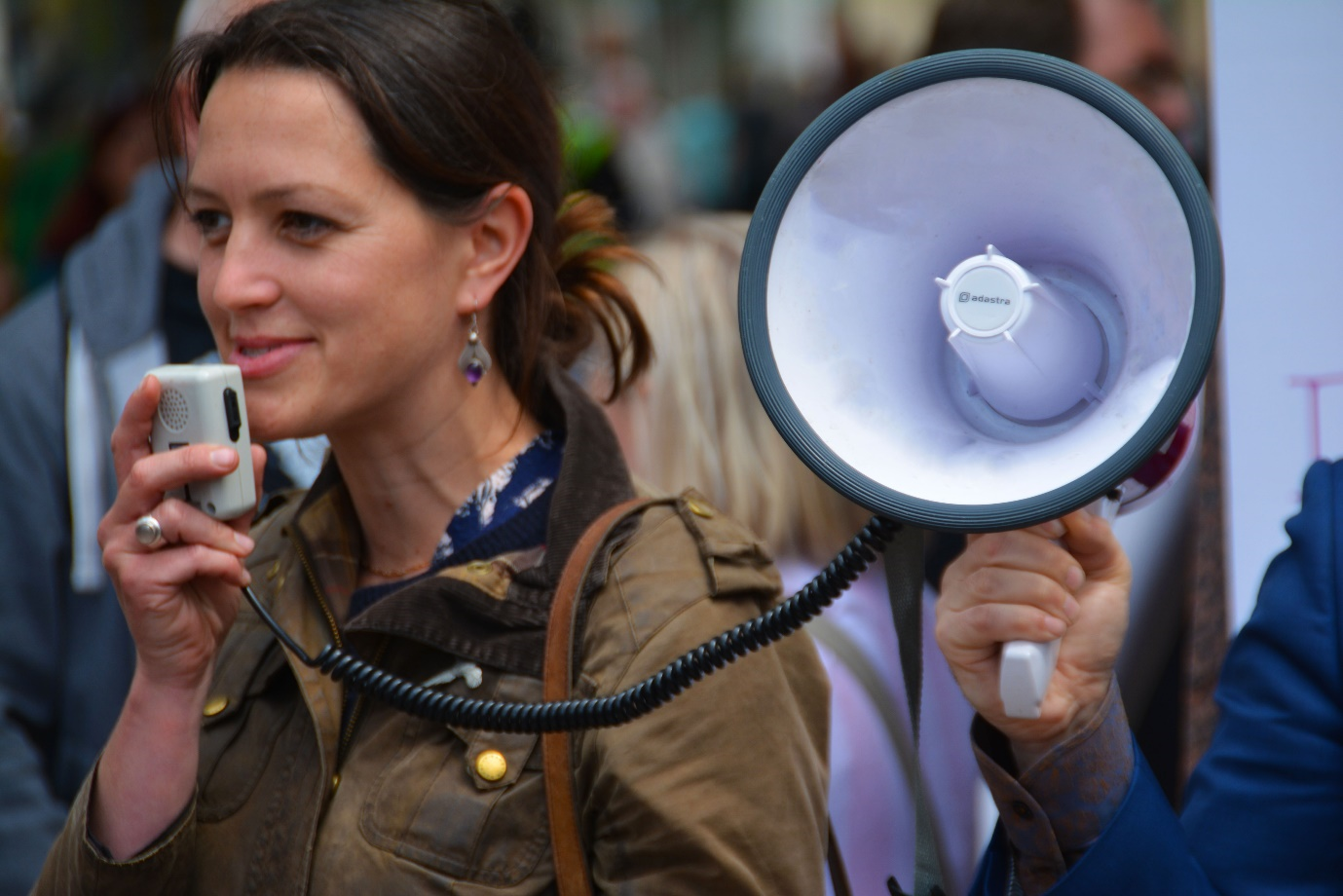
Image by Dean Moriarty from Pixabay
As a process, Participatory Budgeting (PB) is a months-long activity that requires careful planning and coordinated implementation. It is never enough to appoint one or two responsible parties, as effective PB involves a variety of stakeholders – municipal staff, subcontracted agencies, community leaders and influencers, partnership organisations, diverse citizen groups. Each party involved requires customised communication strategies, including diverse communication and dissemination channels, tools, styles and the content itself.
“Empowering Participatory Budgeting in the Baltic Sea Region” the (EmPaci) project has released Communication and Dissemination Plan (CDP) Guidelines for municipality representatives and communication specialists working with municipalities to help in the preparation of a comprehensive PB process. While there is clear awareness of the social, economic, demographic, political and cultural differences between municipalities, the CDP Guidelines raise awareness about the communication and dissemination issues relevant for all – the understanding of effective PB process elements, applicable theoretical concepts and practical examples that might help in understanding the risks and opportunities. The CDP Guidelines introduce readers to:
- major steps in planning communication and dissemination;
- citizen needs assessment and stakeholder analysis methods and tools;
- specific aspects to consider when establishing communication with less active citizen groups – youth, elderly and unemployed individuals;
- the principles of designing key messages, visuals, selecting tools and channels for communication and dissemination;
- major barriers that affect the success of planned activities;
- coordination, monitoring and evaluation of communication and dissemination implemented.
While the Guidelines are universal and can be applied in designing and implementing customised communication and dissemination activities, specific examples from EmPaci partners’ experience are used to emphasise the diversity of approaches and possible creative solutions to be followed. All PB communication and dissemination approaches include partnership management. Each target group requires special attention in terms of communicating PB steps and results, therefore detailed attention, creativity and meaningful partnerships are the keys to PB success.
Participatory budgeting is a process of democratic decision-making, where ordinary people take part in preparing and adopting a municipal or public budget. In the BSR, only a few municipalities have applied a PB process on a regular basis. If you are interested in getting support to develop your PB, please contact your national or the nearest EmPaci partner.
Follow our web page www.empaci.eu to find out more about the project and the latest outcomes or social accounts of the national partners involved in the project.

Photo (c) by Wokandapix from Pixabay
Sharpen The Focus: Identify Process Steps Of Participatory Budgeting
Following a Status Quo Analysis of participatory budgeting (PB) in the Baltic Sea Region, the “Empowering Participatory Budgeting in the Baltic Sea Region” (EmPaci) project introduces its second project output targeting administrative staff, local councillors and other decision makers in local governments in the BSR.
The document “PB Type Groups” aims to provide insights into design principles of PB and to reflect on ideas for how PB can be implemented based on specific preconditions of the municipality and its citizenry.
The background for Participatory budgeting evolution is as follows: Since the 1980s the number of participatory budget initiatives rose and currently thousands of different processes are implemented around the world. None of them are like another again, and the differences are in the details. Therefore, categorisation is difficult but necessary, in order not to “get lost in a thousand and one examples”.[1]
All-round categorisation is impossible. Therefore, this document takes a different approach and sets up a “construction kit” that provides more detailed information about factors related to citizens and the municipality that influences the possible PB-process phases.[2] The contribution lies in the short guidance tables and the resulting “PB type group construction kit” table. To show the application, the construction kit table is filled with the case of the successful PB process of Stuttgart.
The provided overviews raise awareness of complex issues in PB implementation. Practitioners will get advice on many important questions, such as:
- Which phases are possible for a PB process?
- At which phases do legal restrictions influence the process design?
- Despite lower financial resources, what are the cost effective actions to perform?
- What are the topics for specific citizen groups?
- What do possible proposal restrictions look like?
- What should a project team for PB look like? Could citizens be included in the project team?
- Is the workload for the administration staff considered?
- Why is a feasibility check important?
- When should the feasibility check of the proposals be performed?
- What is the possible timeline for the process steps?
- Which incentives are possible to encourage high participation?
- When is feedback possible?
- After everything, is transparency of the whole PB process ensured?
Even if there is no advice in a specific field of the construction kit table (yet), it is open for expansion and raises the question for every user and practitioner: “Should I think about this? Is this field really empty?”
[1] Sintomer/Herzberg/Allegretti/Röcke (2012), p. 5, “Participatory Budgeting Worldwide”, URL: https://www.buergerhaushalt.org/sites/default/files/downloads/LearningfromtheSouth-ParticipatoryBudgetingWorldwide-Study_0.pdf
[2] Based on a literature research and interviews with PB practitioners.
Before developing, find out where you are

Photo (c) by Luisella Planeta Leoni from Pixabay
After long and detailed work, the “Empowering Participatory Budgeting in the Baltic Sea Region” (EmPaci) project is ready to uncover and introduce the first project output - Status Quo Analysis.
To give an idea of how Participatory budgeting (PB) can be implemented, this Status Quo Report aims to provide insights into the current state of citizen participation (CP) in general and PB in particular. It focuses on each of the EmPaci project partner countries - Finland, Germany, Latvia, Lithuania, Poland and Russia – as well as Denmark, Estonia and Sweden.
First, on a national level, a short general description of the countries and definitions of CP and PB, a description of successful PB projects and potential hindrances and ways to foster PB in these countries, are provided. Secondly, the Status Quo Report proceeds with specific information about those municipalities, districts or planning regions, in which the EmPaci project is planning to either implement new or redesign already existing PB processes.
The following nine locations have been selected for the EmPaci PB pilots: Lahti (Finland), Bützow (Germany), Vidzeme Planning Region (Latvia), Rietavas and Telšiai (Lithuania), Bielsko-Biała (Poland) as well as Moskovskaya Zastava/Moscow region of St.Petersburg, Suoyarvskoye Urban Settlement in the Republic of Karelia and Gatchina Municipal District in the Leningrad Region (Russia). These places are very different in terms of their surroundings, financial possibilities, characteristics of their citizens and legal frameworks. They have different stages for PB implementation, from no experience to several successful cycles of PB. Consequently, all locations deal with different challenges, from getting something new started to improving something existent. By making such information, knowledge, and practices available, stakeholders may find relevant inspiration applicable to their own region or municipality. Respectively, one can consider building a vision of “What could PB look like in our municipality?” “What could we change to improve our PB process?” This document, therefore, seeks to build capacities to implement PB in the BSR.
Status Quo Analysis is just one of the first results of the EmPaci project. Soon, in the coming months, further materials are planned for publication:
- A guidebook PB Blueprint: Successful PB projects, also beyond the BSR, will be analysed, and the best practices presented;
- Guide and description of the PB approaches (i.e. local adaptations);
- Guidebook for practitioners on how to implement PB;
- Public Budgeting Tool Feature Matrix with interactive selection and filtering capabilities;
- Online Manual and different Training materials to support PB organisers in educational activities;
- Communication and Dissemination Plan (CDP) for a better understanding of how to organise these processes.
Follow our web page www.empaci.eu to find out more about the project and the latest outcomes or social accounts of the national partners involved in the project.
Participatory budgeting is a process of democratic decision-making we do believe in, where ordinary people take part in preparing and adopting a municipal or public budget. In the BSR, only a few municipalities have applied a PB process on a regular basis. If you are interested in getting the support to develop your PB, please contact your national or the nearest EmPaci partner. More about the project can be found on www.empaci.eu.
Together we can gain more power in decision-making within local, regional or national public institutions!
.png)







